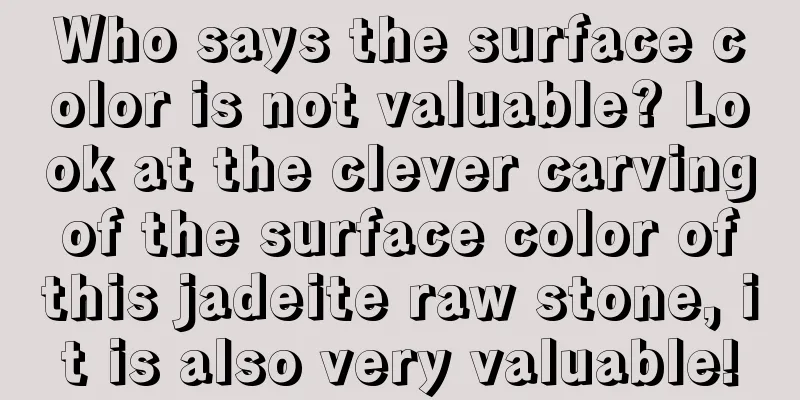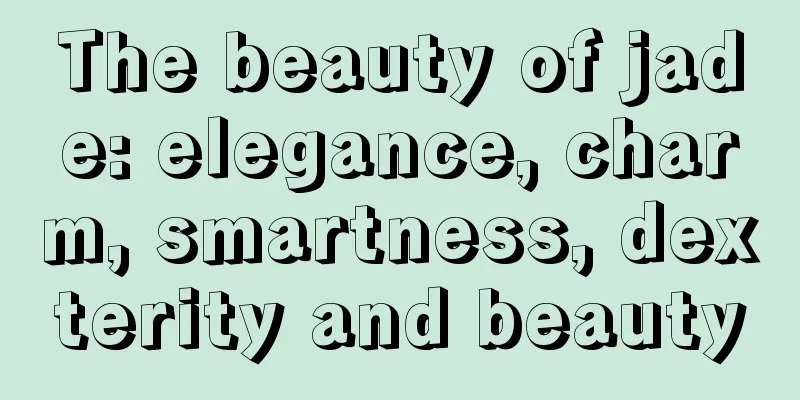The most reliable method to identify jadeite! Surprisingly simple

|
Friends often hold up a piece of jade and ask me if it is jadeite. In order to solve this problem, the editor in this issue will teach you some simple and easy-to-understand natural jade identification techniques, hoping it will be helpful to everyone. Fiber interwoven structureThe jadeite particles that make up jade are intertwined in a fibrous manner, similar to the fibers of tissue paper entangled with each other. Jade with a fiber interwoven structure is relatively rare, so we can preliminarily determine whether the jade is jadeite based on the structure. Green jadeite particles interwoven in a silky pattern The structure is clearer under transmitted light MicroripplesJade is composed of more than one mineral, jadeite. The hardness of other minerals is lower than that of jadeite. In addition, jadeite has hardness anisotropy, which causes jade to form uneven, wavy patterns after polishing - micro-ripples. The micro-ripples under the reflected light are like ripples on the lake surface The artificially processed B-grade jade (bleached and filled jade) and B+C jade (bleached, filled and dyed jade) on the market have lower colloid hardness. After polishing, part of the colloid filling between the particles will be carried away, leaving behind a series of criss-crossing grooves, which are called acid etching reticulation. EmeraldJadeite has two sets of cleavages, so jade sometimes shows flashes on the cleavage surfaces, which is what we often call jadeite texture. Depending on the size of the reflective surface, it can be divided into snowflakes, fly wings, and sand stars. Color RootOn jade jewelry, the gradual transition of green in linear, vein-like, and flake-like forms to the relatively lighter range around them is called color roots. The color roots have a certain color influence and will make the surrounding areas appear green. The color roots of natural jade have a dense and deep feeling, and the color distribution is mostly uneven. The color of dyed jade is distributed in a spider-web-like pattern with a strong floating feeling. The color of some dyed jade is too bright and uniform, which can also be used as a basis for identification. Green is rooted in natural jade When natural jade is not polished, it appears green overall, and the color of the color root diffuses significantly. Under the transmitted light of natural jadeite, the color roots take off the green coat that covers them and reveal their true appearance. Dyed jadeite, the colors float and are distributed in a spider web shape Secondary yellow tintDuring the formation process of jade, it is inevitable that some iron oxides will invade between the particles, forming the secondary yellow hue unique to natural jade. When observed through light, the base of natural jade has a light yellow tint Artificially processed jade has undergone acid washing, and the secondary substances between the mineral particles will be removed, causing the overall base to appear pale white, without the yellow hue of natural jade. In addition, natural jade can also be identified through methods such as weighing, knocking, feeling the coolness, and instrument testing.
|
<<: Glass jade and ice jade, which one would you buy?
>>: Burmese jade, the ultimate beauty of jade!
Recommend
Damakan yellow and green jadeite raw stone, such carving is so exquisite and attractive
The jadeite rough stone comes from the famous Dam...
Why was jade a luxury decades ago but everyone can own it today?
Jade is a type of jade. The high, medium and low-...
Turning waste into treasure, the most gorgeous carving magician
In the jade carving world, the master carver is t...
Jade turns yellow after being worn for a long time. Does this mean that jade also has a shelf life?
We often say: Jade nourishes people, and people n...
The Jade Feelings that Have Been Passed Down Through the Ages
In the jade circle, there is a classic saying tha...
These misunderstandings about identifying dangerous materials are widely circulated. Have you fallen into any of them?
Guatemalan jadeite refers to Guatemalan jadeite ....
Can a novice identify jadeite just by looking at it with the naked eyes? Let’s see what the experts say
For those who are new to jade, identifying jade c...
Although the jade has only a thin layer of yellow mist, the carving is very delicate and charming.
There are some jade materials, although their wat...
What is colorful jadeite, and why is it the "weirdope" among jadeites?
We all know that jade has a variety of colors. In...
With the blessing of four major cultures, it is no wonder that the ancients loved jade so much
The magic of gemstones lies in that, in addition ...
Jadeite with leather carving, an alternative kind of “stinginess”!
The skin of jade is mostly very rough and ugly, a...
As a jade novice, what should you know most if you want to invest in jade?
Man takes care of jade for three years, and jade ...
How is the snowflake cotton of Mu Na Supreme Jadeite formed? Can this standard be used to judge the quality of jade?
Jade is a dense block aggregate formed by the int...
Uncover the secrets of the processing process from rough stone to finished product
China's traditional jade carving craftsmanshi...
What will the finished product look like if you carved an 80-gram piece of jadeite raw stone?
What I want to share with you today is a jadeite ...









